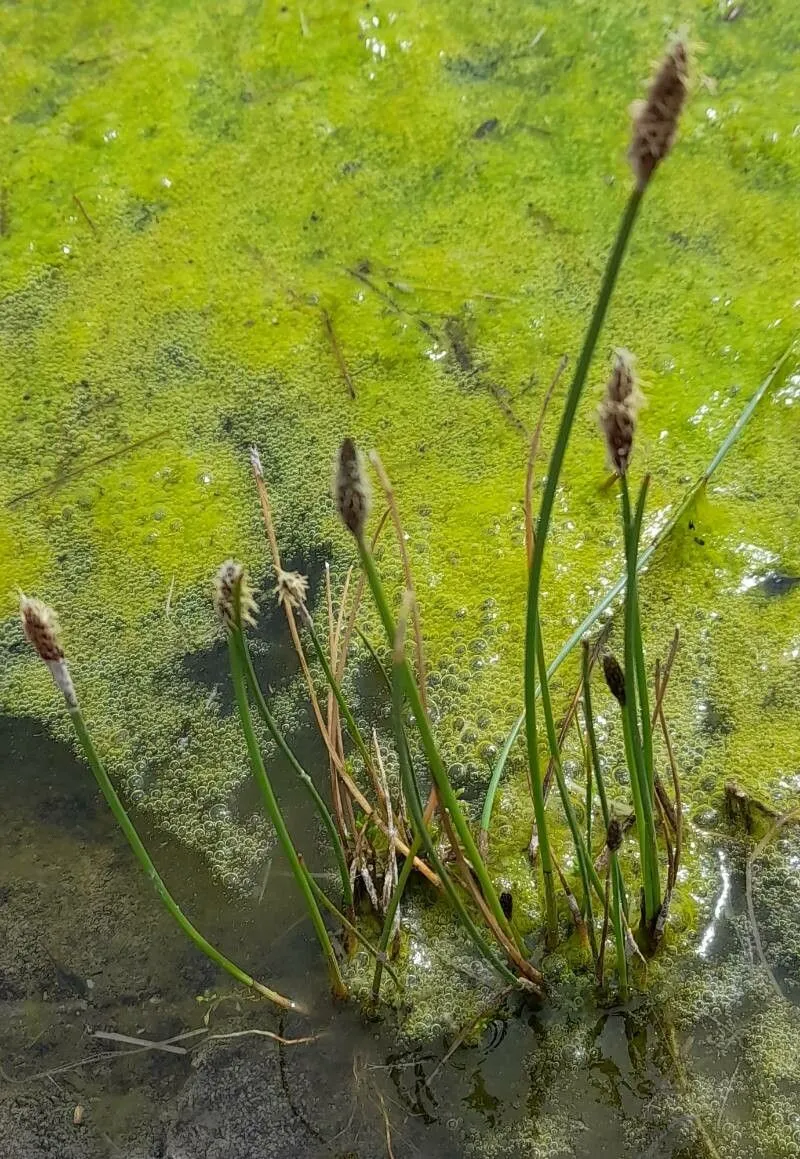
Author: Britton
Bibliography: J.K.Small, Fl. S.E. U.S.: 184 (1903)
Year: 1903
Status: accepted
Rank: species
Genus: Eleocharis
Vegetable: False
Observations: Temp. & Subalpine America
Pale spikerush (Eleocharis macrostachya) is a fascinating plant species belonging to the family Cyperaceae. It is notably found in various temperate and subalpine regions of America, showcasing its adaptability to diverse climatic conditions.
This perennial herb distinguishes itself with its slender, erect stems that elegantly rise from a network of rhizomes. The stems are typically leafless, though narrow, bladeless sheaths may be seen at the base. The overall height of Pale spikerush varies but it can reach up to several feet, making it a noticeable feature in its natural habitat.
The inflorescence of Pale spikerush is a defining characteristic of the species. It consists of a dense, cylindrical spike, often pale in hue, which gives the plant its common name. These spikes house numerous small flowers, each protected by a bract, further contributing to its delicate yet resilient appearance.
Eleocharis macrostachya thrives in wet environments such as marshes, ponds, and the edges of streams and lakes. Its preference for moist, often muddy substrates allows it to play a crucial role in the ecosystem. Pale spikerush helps in stabilizing the soil and preventing erosion while providing habitat and food for various aquatic and semi-aquatic organisms.
The presence of Pale spikerush in both temperate and subalpine regions across America highlights its ecological importance and adaptability. Those interested in botany or ecology, particularly in wetland environments, will find this species to be a remarkable subject of study.
This comprehensive understanding of Pale spikerush was adeptly documented by J.K. Small in “Flora of the Southeastern United States” (1903), and further contributions by Britton have enhanced our knowledge of this species. Today, it continues to be a subject of interest for botanists and ecologists aiming to preserve the rich biodiversity of wetland habitats.
In conclusion, Pale spikerush is more than just a plant; it is a pivotal component of its ecosystem. Its unique structural attributes and ecological functions make it an indispensable part of the natural world, worthy of both admiration and study.
Eng: pale spikerush, creeping spikerush, long-headed spikerush
Fra: éléocharide à gros épi, eléocharide à gros épi
En: Pale spikerush, Creeping spikerush, Long-headed spikerush
Ca: Escirp de marjal, Jonquet
Nl: Gewone Waterbies
Fr: Eléocharide à gros épi, Éléocharide à gros épi, Héléocharis des marais, Souchet des marais, Scirpe des marais
De: Echte Sumpfbinse, Gemeine Sumpfsimse, Gewöhnliche Sumpfbinse, Sumpfried
It: Giunchina comune
Es: Junquillo
Th: จูดทุ่งแสลงหลวง
Taken May 1, 2015 by EOL − boschniakia (cc-by-nc)
Taken Oct 23, 2022 by Trap Hers (cc-by-sa)
Taken May 1, 2015 by EOL − boschniakia (cc-by-nc)
Taken Jun 27, 2015 by EOL − boschniakia (cc-by-nc)
Taken Oct 23, 2022 by Trap Hers (cc-by-sa)
Growth habit>: Graminoid
Family: Myrtaceae Author: (F.Muell.) K.D.Hill & L.A.S.Johnson Bibliography: Telopea 6: 402 (1995) Year: 1995 Status:…
Family: Rubiaceae Author: Pierre ex A.Froehner Bibliography: Notizbl. Bot. Gart. Berlin-Dahlem 1: 237 (1897) Year:…
Family: Sapindaceae Author: Koidz. Bibliography: J. Coll. Sci. Imp. Univ. Tokyo 32(1): 38 (1911) Year:…
Family: Asteraceae Author: A.Gray Bibliography: Pacif. Railr. Rep.: 107 (1857) Year: 1857 Status: accepted Rank:…
Family: Fabaceae Author: Medik. Bibliography: Vorles. Churpfälz. Phys.-Ökon. Ges. 2: 398 (1787) Year: 1787 Status:…
Family: Aspleniaceae Author: (Cav.) Alston Bibliography: Bull. Misc. Inform. Kew 1932: 309 (1932) Year: 1932…